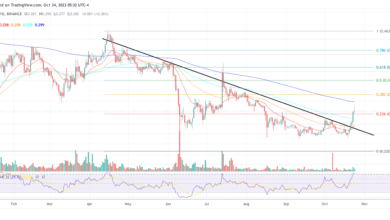Institutional demand for Bitcoin prevails despite SEC roadblocks, thanks to…

- Institutional investors began to show interest in Bitcoin.
- Traders showed optimism, as Implied Volatility for Bitcoin option declined.
The SEC’s decision around Bitcoin’s ETF approval has caused massive uncertainty among the crypto markets. Despite the SEC’s refusal to approve the ETFs it was observed that large institutions continued to show interest in Bitcoin[BTC]. According to data provided by CryptoQuant, fund holdings were interested in Bitcoin accumulation.

Source: CryptoQuant
Read Bitcoin’s Price Prediction 2023-2024
Whales want more
Institutional investors, such as hedge funds, investment firms, and cryptocurrency private funds, hold cryptocurrency assets. These assets are known as “fund holdings.” Examining these holdings offers valuable insights into market dynamics and investor sentiment.
These entities are actively seeking long-term investment opportunities in Bitcoin, demonstrating a more patient approach compared to short-term investors who closely monitor price fluctuations. These entities actively seek long-term investment opportunities in Bitcoin, exemplifying a more patient approach in contrast to short-term investors who closely monitor price fluctuations.
The behavior of these large investors indicates that they are willing to bet on Bitcoin in the long run, implying a bullish future for the king coin. The optimistic behavior showcased by these large investors was paralleled by trader activity.
How are traders behaving?
According to TheBlock’s data, the put-to-call ratio of Bitcoin trades declined significantly. A declining put-to-call ratio typically indicates a shift in sentiment towards a more bullish or optimistic market outlook. The put-to-call ratio is useful for options trading. It compares the number of put options (bearish bets) to call options (bullish bets) on a particular asset or security.
When the put-to-call ratio declines, it suggests that there is a decrease in the demand for protective puts (bearish positions) relative to call options (bullish positions).
Furthermore, this can imply that market participants are becoming more confident in the asset’s future performance and are less concerned about potential downside risks.

Source: TheBlock
A factor that could have influenced the bullish sentiment would be the declining Implied Volatility (IV) for Bitcoin.
Is your portfolio green? Check out the Bitcoin Profit Calculator
A decline in Bitcoin’s IV basically implies that the market expects less price fluctuation or uncertainty for BTC. This can indicate increased stability and confidence in the cryptocurrency.
For traders, a decline in implied volatility may impact options pricing, reducing the cost of options contracts. It may also suggest a reduced potential for large price swings, affecting trading strategies and risk management.

Source: The Block





